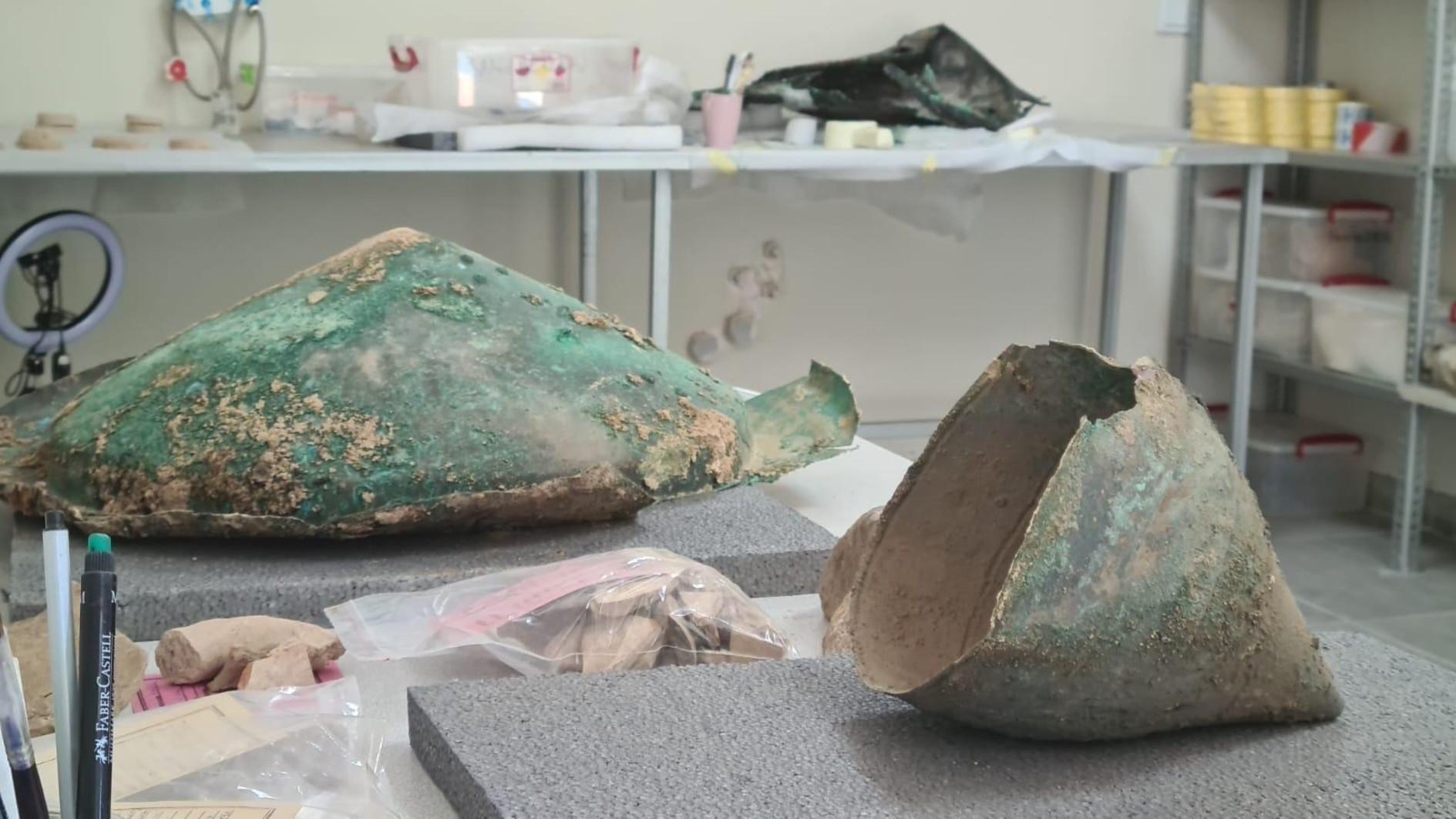
Excavations at Ayanis Castle in Türkiye’s Eastern Anatolian province of Van have yielded fresh archaeological discoveries, including three bronze shields and a helmet dating back 2,700 years.
The artifacts were uncovered during this year’s leg of a 36-year excavation led by Mehmet Işıklı of Atatürk University’s Archaeology Department.
”We found the shields and helmet about six to seven meters deep, and they are in remarkably good condition,” Işıklı said. “Although there are some minor fractures, we are hopeful that restoration efforts will fully preserve them.”
He added that the castle, built by the Urartians, has consistently revealed a wide variety of artifacts.
The bronze shields, described as the richest discovery of this year, were found in what is believed to have been a ceremonial room. “We believe the helmet we found was used in ceremonies due to its detailed and intricate decorations,” Işıklı explained.
He noted that the ongoing conservation efforts would allow these decorations to become more visible over time.
Ayanis Castle is a Urartian fortress located in what is now the Van’s Tuşpa district that suffered a major earthquake, leading to the collapse of mudbrick walls.
“Many of the artifacts are deformed due to this damage, but the shields and helmet are still in great condition,” Işıklı said.
These items add to the growing collection of bronze artifacts discovered over the course of the decades-long excavation.
Işıklı also noted the significance of the finds for understanding Urartian culture, particularly their metalwork.
“These shields likely belonged to the royal family or an elite warrior group, as Urartians were known to gift such items to nobility,” he said.
He added that the shields were dedicated to Haldi, the chief god of the Urartian religion, often associated with guiding the royal family and army into battle.”
In total, more than 30 bronze shields have been uncovered from the site, many in temple areas.
“The god Haldi plays a central role in the Urartian belief system, and these shields, many of which were found near temple sites, were likely offerings or ceremonial gifts,” Işıklı stated.
Ayanis Castle, believed to date back to the reign of King Rusa II who ruled the Urartian Kingdom between the 7th and 6th centuries B.C., is one of the most significant archaeological sites in the region. Perched on a rocky hill overlooking Lake Van, the castle served as both a fortress and a royal residence and continues to offer insights into the Urartian civilization
The strategic location of the castle allowed the Urartians to control the surrounding areas and protect their resources, including agricultural lands and trade rout.
“This area was a hub of metalwork, particularly bronze weapons,” Işıklı added. “Our ongoing work here reveals the Urartians’ exceptional skills in metallurgy.”
The recently uncovered artifacts are expected to be restored and displayed at a regional museum, where they will offer a glimpse into the life and culture of the Urartians, a civilization renowned for its mastery of stone, metal and weaponry.